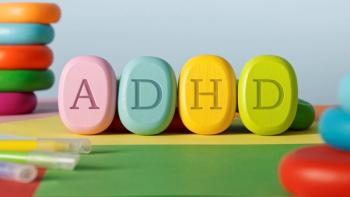
What Twitter and Brain Imaging Reveal About ADHD
The latest news includes revealing tweets, ADHD medications and STD risk, and new insights from functional MRI.
Three new studies show that the language used by adults with ADHD on social media reveals manifestations of the disease; ADHD medication can reduce the risk of sexually transmitted infections (STIs) among young men; and brain imaging uncloaks the involvement of distinct neural pathways in ADHD.1-3
Details of these studies-and their clinical implications-are briefly summarized here.
Study 1. Tweets Reveal Life of Adults With ADHD
The tweets of adults with ADHD reveal what life is like for them and may also provide clues to help facilitate more effective treatments.
The study
In
Clinical implications
This research has the potential to help clinicians understand the varying manifestations of ADHD, and it could be used as a complementary feedback tool to give personal insights to those with ADHD. “On social media, where you can post your mental state freely, you get a lot of insight into what these people are going through, which might be rare in a clinical setting. In brief 30- or 60-minute sessions with patients, clinicians might not get all manifestations of the condition, but on social media you have the full spectrum,” said lead author Sharath Chandra Guntuku, a postdoctoral researcher at the University of Pennsylvania.
Study 2. ADHD Treatment May Reduce Risk of STIs in Young Men
Adolescents and young adults with ADHD-particularly those with substance use disorders-are at increased risk for sexually transmitted infections (STIs). However, treatment with ADHD medications can lower the risk of subsequent STIs in young men.
The study
Short-term and long-term use of ADHD medication reduced the risk of subsequent STIs among men by 30% and 41%, respectively, but not among women.
Clinical implications
“Increasing evidence supports an association between ADHD and various health-risk behaviors, such as risky driving, substance abuse, and risky sexual behaviors. Clinical psychiatrists should focus on the occurrence of risky sexual behaviors and the risk of STIs among patients with ADHD, and emphasize that treatment with ADHD medications may be a protective factor for prevention of STIs,” said lead author Mu-Hong Chen, MD, a physician at the Taipei Veterans General Hospital and the College of Medicine, National Yang-Ming University, Taipei.
Study 3. Functional MRI Reveals Distinct ADHD Impairments
Different neural systems related to executive functions and reward processing may contribute independently to the development of ADHD symptoms.
The study
The 3 ADHD subgroups were otherwise clinically indistinguishable. Functional magnetic resonance imaging (fMRI) showed not a single fMRI-measured abnormality that could be found in all 3 ADHD subgroups.
Clinical implications
“This study found evidence that clearly supports the idea that ADHD-diagnosed adolescents are not all the same neurobiologically,” said lead author Michael Stevens, MD, of the Olin Neuropsychiatry Research Center, Hartford, CT, and Yale University. The findings suggest that ADHD encompasses a constellation of different types in which the brain functions in completely different ways. “Ultimately, by being open to the idea that psychiatric disorders like ADHD might be caused by more than one factor, it might be possible to advance our understanding of causes and treatments more rapidly,” said Dr. Stevens.
References:
1. Guntuku SC, Ramsay JR, Merchant RM, Ungar LH.
2. Chen M-H, Hsu JW, Huang KL, et al.
3. Stevens MC, Pearlson GD, Calhoun VD, Bessette KL.
Newsletter
Receive trusted psychiatric news, expert analysis, and clinical insights — subscribe today to support your practice and your patients.











